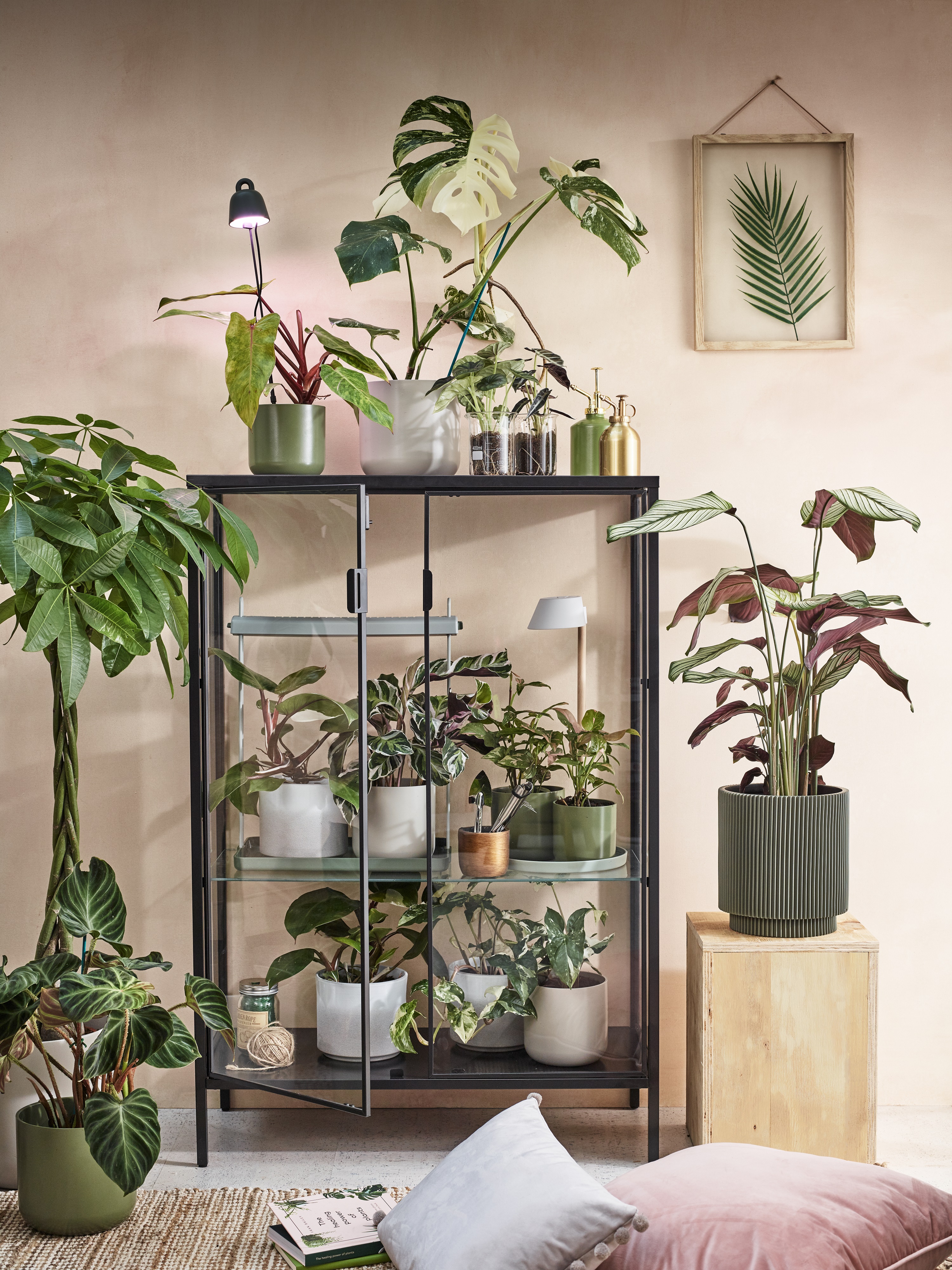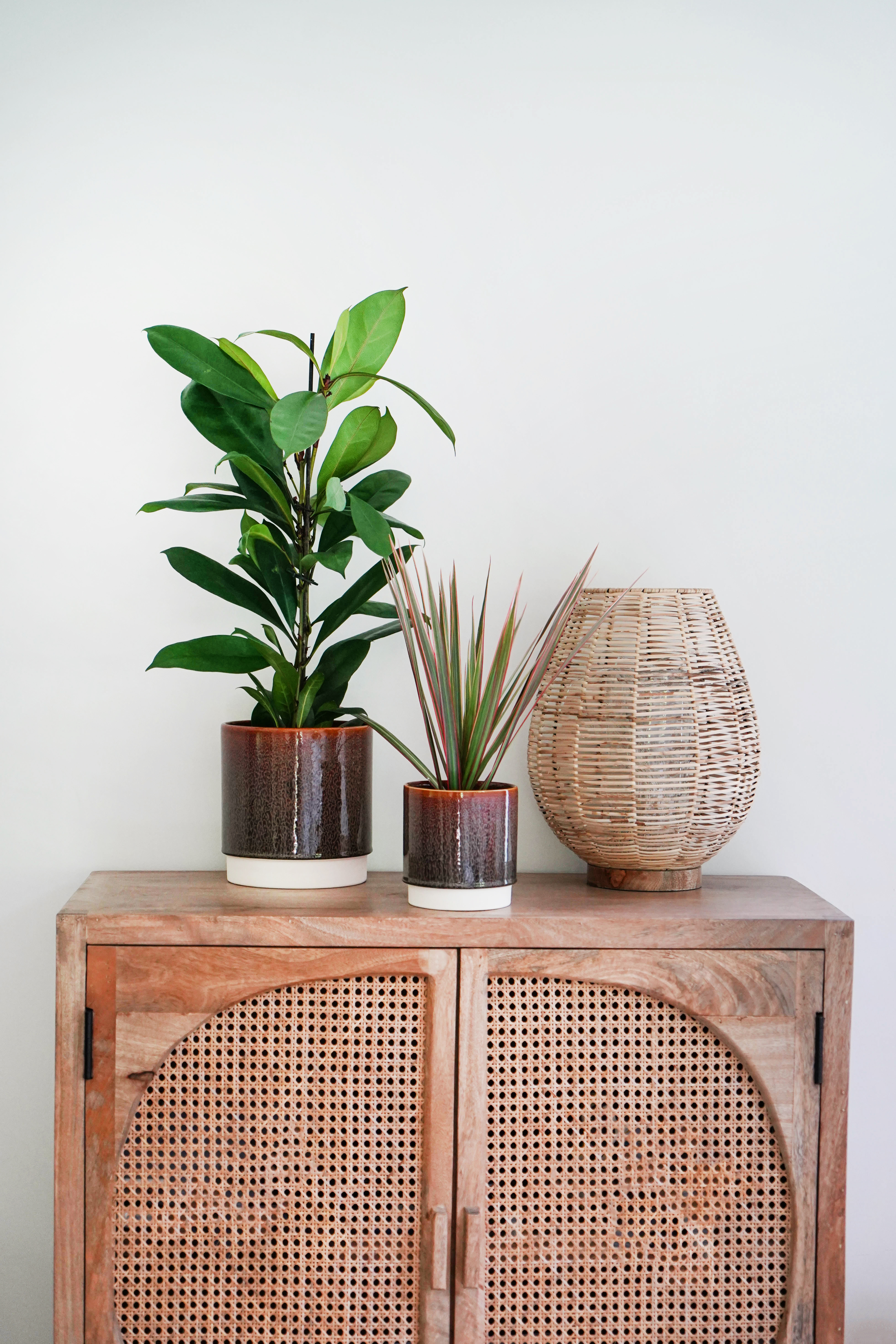How to fertilize houseplants naturally - 5 household products you can recycle to help your plants thrive organically
Learn how to fertilize houseplants naturally with these common household products for an eco-friendly alternative to chemicals...

Not a fan of chemical fertilizers? Learning how to fertilize houseplants naturally is a safe, eco-friendly and efficient alternative.
As well as knowing how often you should water houseplants, fertilizing your plants is also important to allow them to thrive and reach their full potential.
So what exactly is natural fertilizer? Andrew Gaumond, horticulturist and editorial director at Petal Republic, explains: 'Natural houseplant fertilizers, in their simplest form, are the repurposing of organic matter to feed the soil and your houseplants.
'Organic matter can be derived from everyday household food items that are rich in potentially beneficial nutrients, such as banana peel, egg shells, molasses, tea leaves, and even coffee grounds.'
And why might you choose natural fertilizer over chemical fertilizer?
'For the most part, natural fertilizers are generally considered gentle and sustainable options compared to many chemically processed feeds and are also a lot more affordable (as you’re often re-purposing existing items you already possess),' says Andrew. 'Chemical fertilizers are also much more potent and require care not to overfeed plants, which can lead to disease, and growth problems.'
He adds: 'With any natural fertilizer, you need to take a considered approach in terms of the application volume and the form you’re applying the organic matter. Rotting or decaying items can also lead to unwanted fungal infections.'
The Livingetc newsletters are your inside source for what’s shaping interiors now - and what’s next. Discover trend forecasts, smart style ideas, and curated shopping inspiration that brings design to life. Subscribe today and stay ahead of the curve.
How to fertilize houseplants naturally for an eco-friendly boost

'Fertilizing houseplants provides them with some essential nutrients they need to thrive,' says Erin Marino, editorial director of The Sill. 'These nutrients are not food for plants - plants make their food using sunlight in a process called photosynthesis.
'Fertilizer is more like a multivitamin that encourages new, healthy growth. It replaces essential nutrients our plants' potting mix loses as plants grow over time.
'Fertilizers can contain quite a few nutrients, but the core nutrients, or macronutrients, are nitrogen (N), phosphorus (P), and potassium (K).'
Both natural and chemical fertilizers accomplish the same task in different ways: delivering nitrates, potassium ins, and phosphates to plants.
However, organic fertilizers are made from all-natural ingredients, like recycled food waste, so they tend to be less concentrated.
Erin adds: 'Mild can be a pro, not a con, when it comes to houseplant fertilizer; organic fertilizer is a safe, chemical-free alternative. If you share your space with pets or small children, organic fertilizer is a good, worry-free choice.'
See how you can use common household food waste to fertilize houseplants aturally below:

1. Coffee grounds
'When considering using coffee grounds to fertilize your houseplants, we recommend sticking with used coffee grounds,' says The Sill's Erin Marino.
'This is because fresh grounds can be high in acidity and caffeine, which can have a negative impact on your houseplants. There are a select few plants that can benefit from fresh grounds - including acidity-loving hydrangeas, rhododendrons, azaleas, Lily of the Valley, blueberries, carrots, and radishes - but, generally, most common houseplants will prefer low to no acidity.
The most accepted method for how to repurpose used coffee grounds into fertilizer, which The Sill also recommend as the best for your plants, is adding the used grounds to your compost.
Erin says: 'To get started, add the used coffee grounds to your compost pile, which usually consists of vegetable peels, fruit skins, and other types of natural waste. When your compost is ready, mix a small amount of it with potting soil and distribute among your plants.
'Depending on what was in your compost mix, be cautious of how much compost you use. Excessive amounts of compost or coffee grounds can lead to foliage burn and nutrient toxicity.
'Just like with store-bought fertilizer, a little goes a long way. Compost is filled with rich, organic matter and naturally retains water, so not only will you want to be mindful of how much you mix in your potting soil, but you will also want to be mindful of how often you water your plant potted in it.
'If you are keen on adding compost to your potting soil for the nutrients, consider also adding coarse sand or perlite to the potting mix to help decrease the risk of overwatering.'
If you do not compost at home, you can create a liquid fertilizer with your used coffee grounds instead.
'The key to using used coffee grounds as a liquid fertilizer is dilution,' explains Erin. 'Too much of a good thing is possible, particularly for plants potted in containers. We recommend using about a teaspoon of coffee grounds per gallon of water.
'Let the coffee grounds and water mixture steep for a few nights, stirring occasionally, then strain the liquid through a cheesecloth. The remaining liquid can be used to water, and gently fertilize, your houseplants.'
2. Banana peels
'Banana peel contains potassium, which is an essential nutrient in all fertilizers,' says Erin.
Peels also contain small amounts of magnesium, nitrogen and phosphorus, making them ideal as a homemade natural houseplant fertilizer.
And using them is super-easy: simply lay the peel over the soil, or cut it up and mix it in.
3. Eggshells
Calcium is an essential nutrient for plants, and eggshells are a great natural source.
After giving your eggshells a good clean, simply crush them up and mix them into the soil for your potted plants.
Crushed shells can also be added to a jug of boiling water, steeped over night, and then added as a liquid natural fertilizer for your houseplants too.
If you've spent time reading up on the best houseplants for low light, how to treat mold on houseplant soil, and how to get rid of fungus gnats, this is another hack to add to your houseplant survival manual.
4. Green tea
Not only is green tea a healthy drink for humans, it's a nutrient-boost for your houseplants, too.
Used green tea grounds and leaves are rich in tannic acid. According to Happy DIY Home: 'This helps to lower the pH level of the soil. Rich in nutrients this natural fertilizer for houseplants suggestion ensures that your plants will become strong and healthy. Green tea is a great option for acid loving plants such as African violets and begonias.'
Simply brew the leaves, allow to cool down, and then pour onto the soil around your houseplants.
5. Epsom salts
Epsom salts contain a number of plant-nourishing nutrients, including magnesium and sulfate, which encourage healthy growth.
There's a number of easy ways to add use Epsom salts as a natural fertilizer for your houseplants.
'Water your plants once every two weeks during the growing seasons with a solution consisting of onne tablespoon of Epsom salt dissolved into one gallon of water,' suggests Happy DIY Home.
'Alternatively, you can mist the leaves of your plants with a mixture twice as concentrated.'
You can also mix a handful of Epsom salt granules into the soil when you're planting or repotting your houseplants.

What is the best homemade fertilizer for indoor plants?
Eggshells, coffee grounds, and banana peels all contain houseplant-boosting micronutrients and make great natural fertilizers for your houseplants.
Ruth Doherty is a lifestyle journalist based in London. An experienced freelance digital writer and editor, she is known for covering everything from travel and interiors to fashion and beauty. She regularly contributes to Livingetc, Ideal Home and Homes & Gardens, as well as titles like Prima and Red. Outside of work, her biggest loves are endless cups of tea, almond croissants, shopping for clothes she doesn’t need, and booking holidays she does.